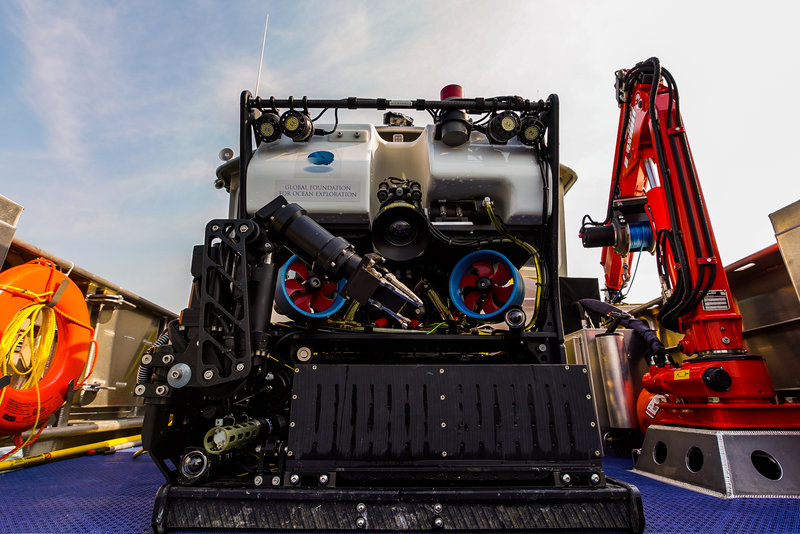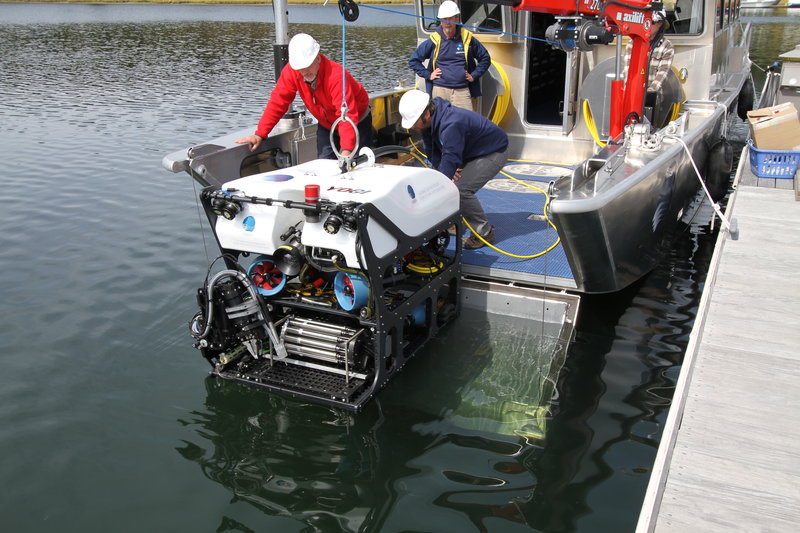
Some ocean environments are a challenge to study because they are places that are difficult to get to. In cases like this, scientists turn to advanced technology like underwater robots.
A remotely operated vehicle (ROV) is an unoccupied underwater robot that is connected to a ship by a series of cables. These cables transmit command and control signals between the operator and the ROV, allowing remote navigation of the vehicle.
Yogi was designed, built, and is operated by the Global Foundation for Ocean Exploration (GFOE) specifically to meet the needs of the science and ocean exploration communities. Its total weight of 1,100 pounds, relatively small footprint, and significant payload make it an ideal vehicle for a large variety of sensors and sampling equipment. Yogi is capable of collecting spectacular underwater imagery with its 4K cameras, it carries a five-function manipulator, and is rated to dive as deep as 1,500 meters (4,921 feet).

GFOE remotely operated vehicle Yogi is portable and capable of diving to 1,500 meters (4,921 feet) of depth. Image courtesy of Daniel R. Rogers. Download larger version (jpg, 2.6 MB).
The vehicle’s first project was to explore Yellowstone Lake, so the ROV was named after the cartoon bear who lived in a fictional version of Yellowstone National Park.
This expedition aims to better understand the location, distribution, status, and health of deep-sea coral and sponge ecosystems and to inform conservation and management actions. Researchers will use GFOE’s Yogi ROV to obtain photos and collect samples from the seafloor.
Researchers will deploy Yogi from NOAA Ship Reuben Lasker. Yogi is one half of a two-body ROV system. Its partner, Guru, serves as a camera and lighting sled which helps the pilots gain situational awareness of Yogi and its location. Operating in tandem, Yogi works along the bottom of the ocean collecting high-resolution video and still images while Guru hovers above. Both vehicles send all data they collect back to the ship via a fiberoptic tether. The data are then transmitted to the internet via a VSAT antenna and satellite link, allowing anyone with internet access to see the video in near real time.

GFOE ROV Yogi being launched for trim tests. Image courtesy of Dave Lovalvo. Download larger version (jpg, 6.8 MB).
The information gathered from Yogi allows researchers to explore the relationship between the deepwater habitats and the animals that rely upon them.